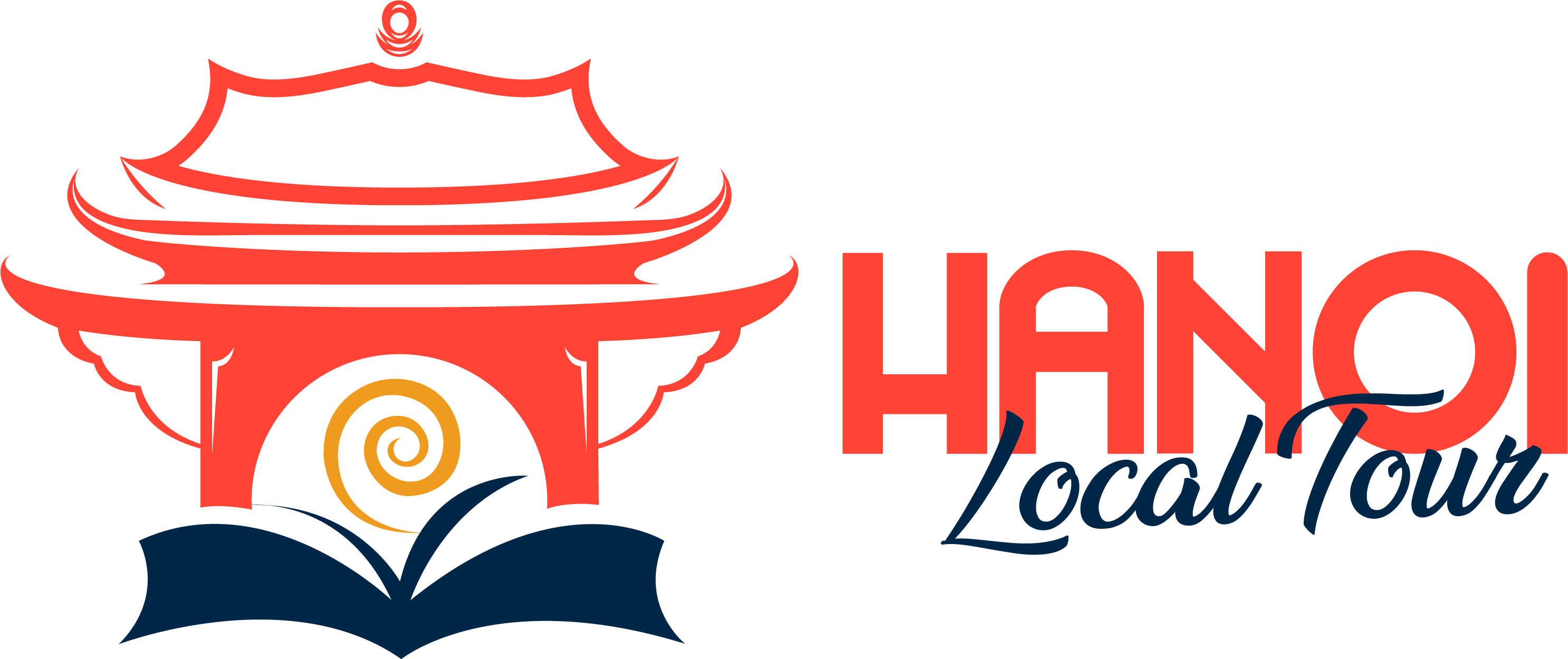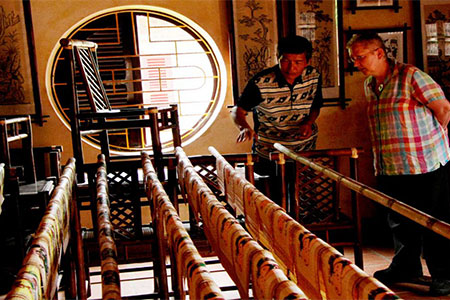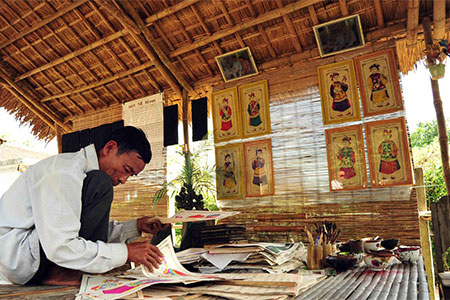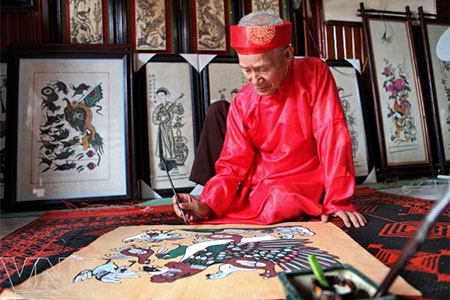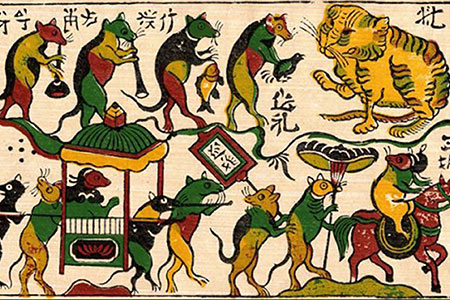About 33km away from Hanoi to the east and adjacent to the southern bank of the Duong river, Ho or Dong Ho village is a traditional village located at Song Ho commune of Thuan Thanh district, Bac Ninh province. This is the cradle of folk woodcut painting which is well known both at home and abroad with the pictures that has long been put into the mental life of Vietnamese people.
Appeared from the 16th century, Dong Ho paintings are formed by the manual method. They are the crystallization of ingenuity and patience as well as the delicate aesthetic art. Dong Ho pictures are not painted by the art inspiration, they are printed on the board. To have inscriptions reached the sophisticated level, it must have people who draw the patterns. Those who draw the patterns and the inscriptions are required to have love for arts and artistic soul, especially high level of technical qualifications. Printing step might not be hard because everyone can spread colors on boards and print. Dong Ho paintings have up to 180 types, divided into 5 main categories including worship paintings, history paintings, praise paintings, living paintings and comics.
The period from the second half of the nineteenth century until 1944 was the heyday of the picturesque village, with 17 families in the village involved in doing paintings. Through the years of war against France, due to the destruction of war, doing paintings also was temporarily disrupted. Until peace was restored in the North, especially since reunification, the painting village has been restored. Unfortunately, through decades of innovation under the market economy and the impact of Western art movements, cognition and social trends also change that pushed Dong Ho paintings under threats of disappearance.
Paper to print is the Do paper with smooth surface. Before printing, the paper is covered by a material derived from the shells of scallops and snails that have created separate substances of Dong Ho folk paintings. Ho’s villagers knew how to apply, refine from natural materials to create traditional colors with freshness and fastness of colors. For example, blue is extracted from copper rust; indigo extracted from leaf of melaleuca in Lang Son; crimson taken from bark of Vang; red from gravel mining on the mountain; yellow from straw or Hoe flower; black from ash of Xoan or ash of bamboo leaves; ivory-white from shells of scallops and snails. These are the basic colors, do not mix and each color corresponds to a woodblock, therefore, Dong Ho paintings is only limited to four colors.
The main theme of Dong Ho paintings is taken from the life and production activities derived from the traditional philosophy. It is simple but very close to daily life. From the characters in the stories or legends, the beautiful scenery of mountains and rivers, to the paintings meaning to wish, and everyday activities such as Rat's wedding, scene of jealousy, scene of catching coconuts and so on. All of them contain the deeply humanistic philosophy.
Dong Ho folk paintings are not strictly applied anatomy, principles of light or laws of near or far of modern painting. The artists of folk paintings bring many conventional in layout, in the manner depicted in color. All of paintings are used single-line drawing style to present the messages. Visit Dong Ho village, the tourists not only have chance to admire the traditional art of Vietnamese people, but also understand the culture and lifestyle of the people through scenes in the paintings. All of them are presented in the pictures with the simplest and clearest lines so that the viewers can easily to understand. Moreover, the visitors can take these pictures as a souvenir for their beloved friends and family.
